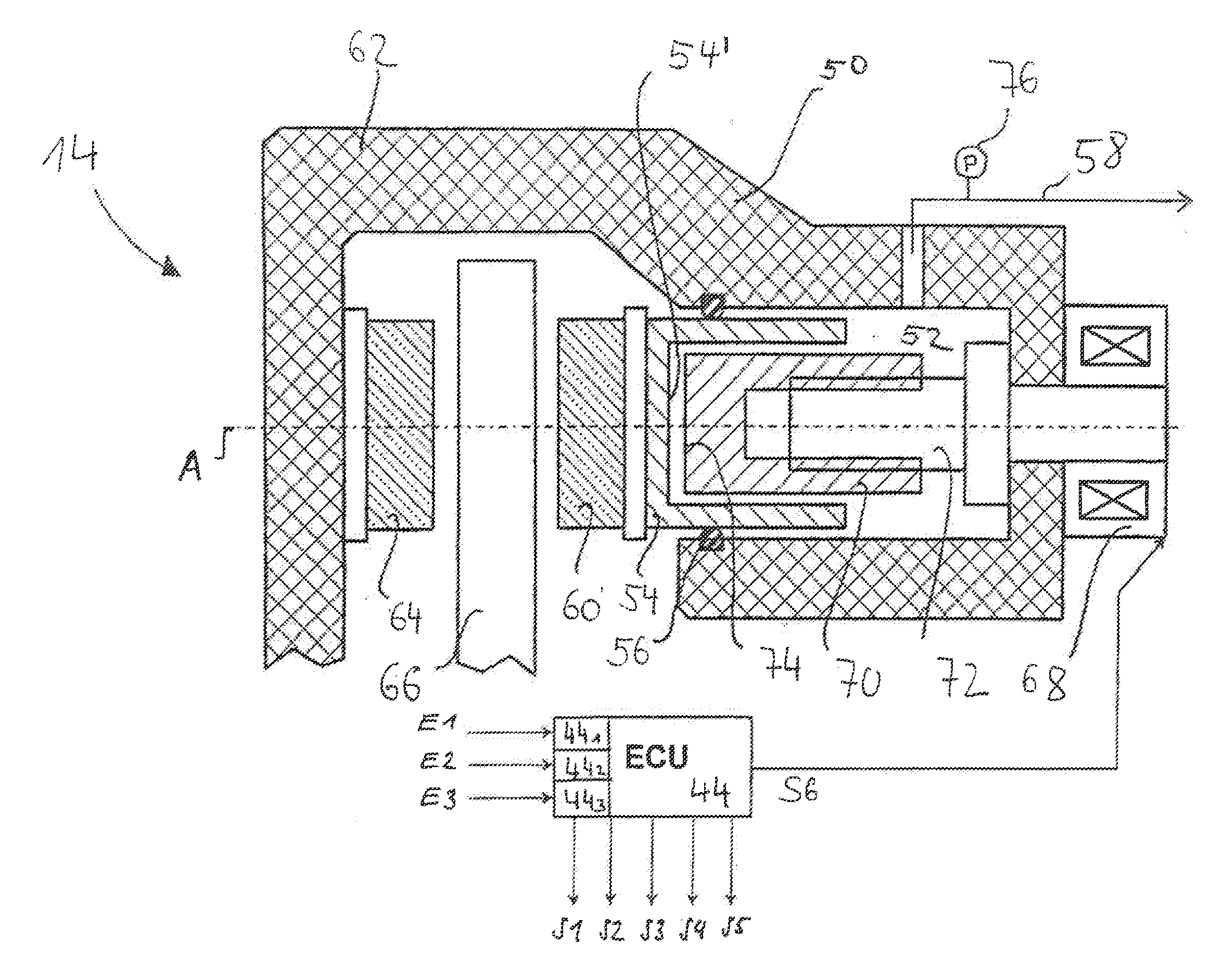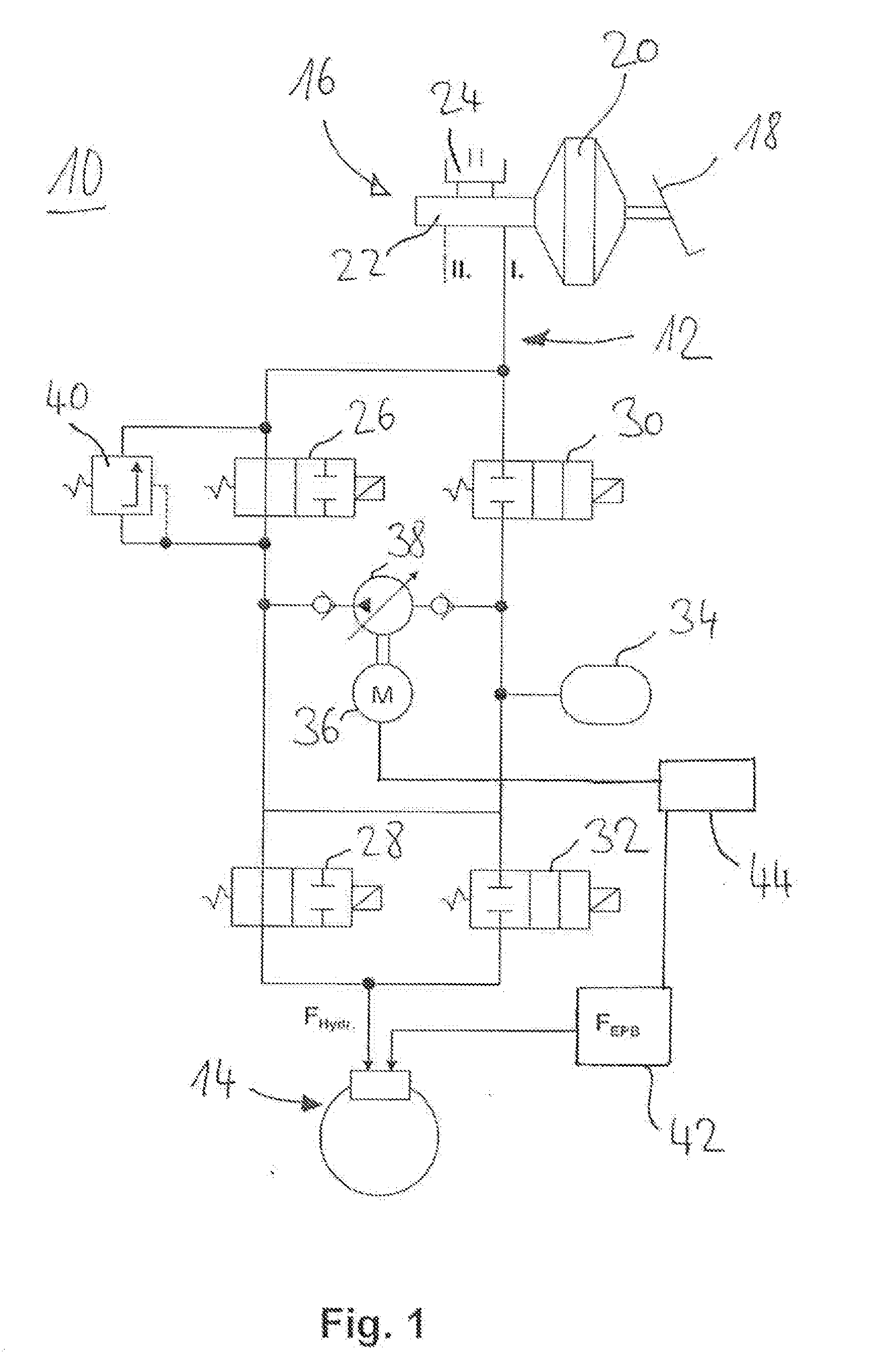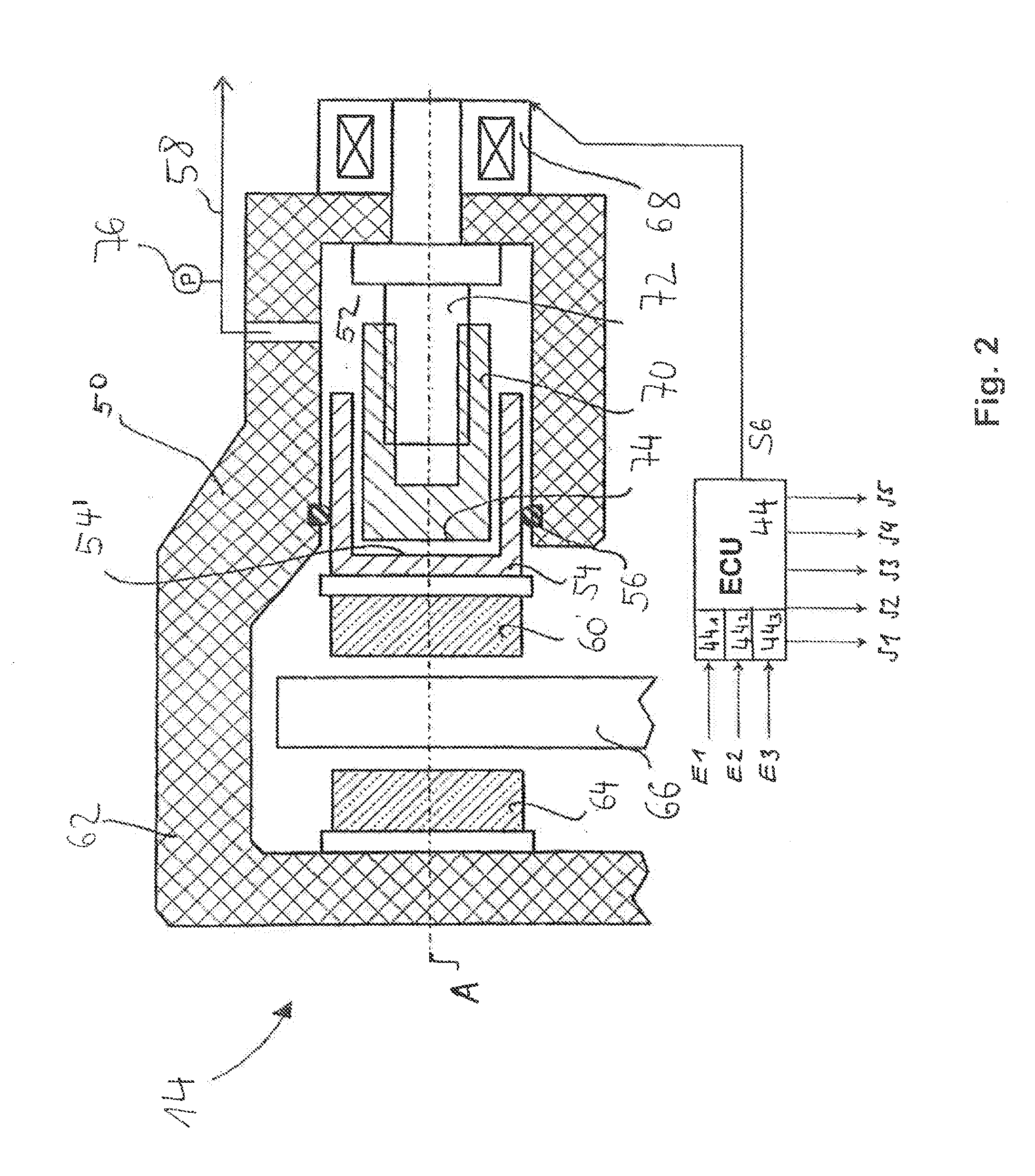Procedure for Actuating a Hydraulic Parking Brake
a technology of hydraulic clamping and parking brake, which is applied in the field of parking brakes, can solve the problems of increasing increasing the amount of hydraulic fluid inside the hydraulic chamber, so as to shorten the total duration of the parking brake operation, reduce the running time of the hydraulic actuator, and reduce the accompanying background nois
- Summary
- Abstract
- Description
- Claims
- Application Information
AI Technical Summary
Benefits of technology
Problems solved by technology
Method used
Image
Examples
Embodiment Construction
[0031]FIG. 1 shows an embodiment of a motor vehicle brake system 10 with hydraulic parking brake functionality. The brake system 10 comprises two separate brake or hydraulic circuits with a brake circuit split of the X-split type, for example, in which each front wheel and the opposite-side rear wheel of the motor vehicle are allocated to exactly one of the two brake circuits respectively. For simplicity, only a single brake circuit 12 with only a single wheel brake 14 is shown in detail in FIG. 1.
[0032]For service brake operations there is provided a brake pressure generating unit 16 configured in a conventional manner. The brake pressure generating unit 16 comprises a brake pedal 18, a brake servo 20, a master cylinder 22 coupled to both brake circuits and an unpressurised reservoir 24 for hydraulic fluid. In deviation from the embodiment represented in FIG. 1, in which the wheel brake pressure for service brake operations is generated by foot pressure, the invention could also be...
PUM
 Login to View More
Login to View More Abstract
Description
Claims
Application Information
 Login to View More
Login to View More - R&D
- Intellectual Property
- Life Sciences
- Materials
- Tech Scout
- Unparalleled Data Quality
- Higher Quality Content
- 60% Fewer Hallucinations
Browse by: Latest US Patents, China's latest patents, Technical Efficacy Thesaurus, Application Domain, Technology Topic, Popular Technical Reports.
© 2025 PatSnap. All rights reserved.Legal|Privacy policy|Modern Slavery Act Transparency Statement|Sitemap|About US| Contact US: help@patsnap.com



